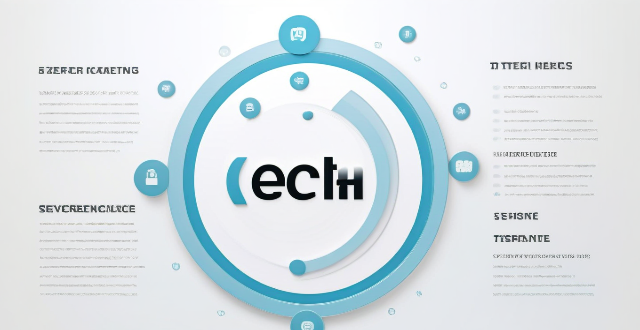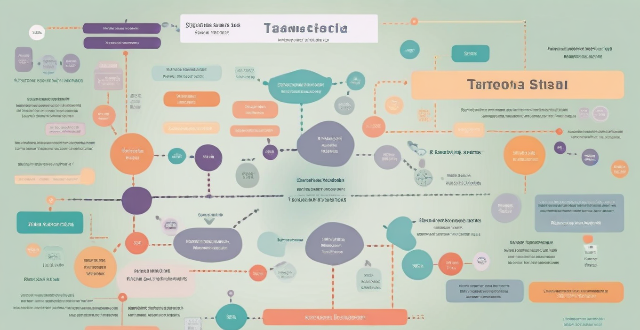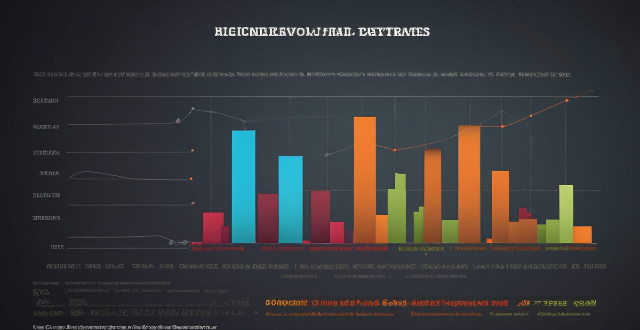Resource Tech

What are the top holiday gifts for tech enthusiasts ?
This holiday season, surprise the tech enthusiasts in your life with top gifts ranging from the latest smartphones and tablets to immersive gaming experiences and smart home devices. Offer them the convenience of wearable technology and audiophile essentials for superior sound quality. Accessories like wireless chargers and mechanical keyboards enhance their tech experience, while gadgets such as drones and 3D printers bring innovation to their interests. Don't forget about software and subscription services for continuous entertainment and productivity. Choose wisely based on their preferences and existing devices for a personalized touch.

What role does innovation play in the success of tech stocks ?
Innovation is key to the success of tech stocks, impacting product development, market expansion, efficiency, disruption, and investor sentiment. Tech companies that prioritize innovation often outperform competitors and provide strong returns for shareholders.

What are some undervalued tech stocks worth considering ?
Tech stocks are popular but not all are equal; some may be undervalued, presenting a great opportunity for investors. This article discusses four such stocks: Cloudflare, Palo Alto Networks, Twilio, and Zscaler. These companies have seen strong growth and have large addressable markets, yet their stock prices have been relatively flat since their peaks in 2019-2021. They offer potential bargains for investors looking for value in the tech sector.

What is the outlook for tech stocks in 2022 ?
The outlook for tech stocks in 2022 is uncertain due to several factors that could impact their performance. Key factors affecting tech stocks in 2022 include the ongoing economic recovery from the COVID-19 pandemic, potential rising interest rates, regulatory risks, and innovation and disruption. While the economic recovery and continued innovation in the sector could drive growth, rising interest rates and regulatory risks could pose challenges for some companies. Investors should carefully consider these factors before making any investment decisions in the tech sector.

Which tech companies are leading the market ?
This article discusses the leading tech companies in the market, including Apple Inc., Microsoft Corporation, Amazon.com, Inc., Alphabet Inc. (Google), and Facebook, Inc. It highlights their key products and services, such as Apple's innovative devices, Microsoft's software and cloud services, Amazon's e-commerce platform and AWS, Google's search engine and Android OS, and Facebook's social media platforms and advertising revenue. The article also notes the competitive nature of the tech industry and the potential for new leaders to emerge in the future.

How does the pandemic affect the performance of tech stocks ?
The COVID-19 pandemic has significantly impacted tech stock performance through increased demand for technology, supply chain disruptions, changes in investor sentiment, and government stimulus and regulation. Remote work and learning have boosted tech sales, while e-commerce growth has further driven revenue. However, production delays and component shortages pose challenges. Investor behavior varies, with some seeking safety in tech stocks and others avoiding risk. Government support and regulatory changes also influence the sector's performance. The long-term effects on tech stocks remain uncertain.

How have tech stocks performed in the last year ?
In the last year, tech stocks have experienced significant fluctuations in performance, with major companies like Apple, Amazon, Google, and Microsoft leading the market. Emerging technologies such as artificial intelligence, cloud computing, and electric vehicles have shown strong growth potential. Factors influencing tech stocks include economic recovery, innovation, regulatory scrutiny, supply chain challenges, and interest rates. Top performers include Apple, Amazon, Microsoft, NVIDIA, and Tesla, while underperformers include Facebook (Meta Platforms), Twitter, and Snap Inc. Investors should consider both the potential rewards and risks associated with investing in this dynamic sector.

What is the function of thermoregulation in high-tech sportswear ?
The text discusses the function of thermoregulation in high-tech sportswear. It explains that thermoregulation is crucial for athletes to maintain their optimal body temperature during physical activities, as overheating or being too cold can affect their performance and increase the risk of injury. High-tech sportswear uses advanced materials and technologies to regulate temperature and manage moisture, including insulation, ventilation, moisture-wicking capabilities, and quick drying. These garments also adapt to different environments through layering systems and seasonal variants. Overall, the function of thermoregulation in high-tech sportswear is essential for athletes to stay comfortable, focused, and efficient during their activities.

How do I invest in tech stocks as a beginner ?
Investing in tech stocks can be a profitable venture, but it's important to approach it with caution and knowledge. Here are some steps to help you get started: 1. Educate yourself on the basics of the stock market and the technology sector. 2. Set investment goals based on your risk tolerance and desired returns. 3. Choose a reputable brokerage firm that offers access to the stock market. 4. Research individual tech stocks by looking at financial statements, earnings reports, and news articles. 5. Diversify your portfolio by investing in multiple tech stocks across different industries and companies. 6. Monitor your investments and stay informed about industry developments and company news. 7. Remember that investing in stocks involves risks, including the possibility of losing money. Do your own research and consult with a financial advisor before making any investment decisions.

How do high-tech training facilities contribute to athlete development and recovery ?
High-tech training facilities contribute to athlete development and recovery by providing advanced equipment, technologies, and personalized programs. These resources help improve performance, prevent injuries, and facilitate efficient recovery.

What are the most popular tech gifts for this holiday season ?
The holiday season is a time for giving and receiving gifts, and technology has become an increasingly popular category of gift items. From smartphones to smart home devices, there are plenty of options to choose from. Here are some of the most popular tech gifts for this holiday season: 1. Smartphones: iPhone 13, Samsung Galaxy S21, Google Pixel 6 2. Smart Home Devices: Amazon Echo Show 10, Google Nest Hub, Philips Hue Lightstrip 3. Laptops and Tablets: MacBook Air M1, Dell XPS 13, iPad Pro 4. Wearables: Apple Watch Series 7, Fitbit Charge 5, Samsung Galaxy Watch 4 5. Gaming Consoles: PlayStation 5, Xbox Series X, Nintendo Switch OLED These are just a few examples of the many tech gifts available this holiday season. Whether you're looking for something practical or fun, there's sure to be something on this list that will make a great gift for any tech enthusiast on your list!

How will a lunar base address issues related to Earth's overpopulation or resource depletion ?
A lunar base could address Earth's overpopulation and resource depletion by reducing population pressure, enabling sustainable resource use, advancing science and technology, and promoting international cooperation.

How does resource-efficient utilization contribute to sustainable development ?
Resource-efficient utilization is key to sustainable development, conserving resources, reducing waste, and promoting economic growth. It helps mitigate environmental impact, provides economic benefits, and enhances social well-being. As we face global challenges like climate change and resource scarcity, adopting resource-efficient practices is crucial for a sustainable future.

How can education and awareness programs help in promoting resource-efficient utilization ?
Education and awareness programs are crucial for promoting resource-efficient utilization. These programs can help individuals make informed decisions about their consumption habits and encourage them to adopt more sustainable practices. To maximize the impact of education and awareness programs, it is important to target different audiences, use multiple channels for dissemination, provide practical tips and strategies, and foster a sense of community and collective action towards sustainability goals. By doing so, these programs can contribute significantly to resource efficiency and promote sustainable development.

How does a circular economy contribute to waste reduction and resource conservation ?
The circular economy model promotes waste reduction and resource conservation by advocating for the reuse and recycling of materials, reducing raw material extraction, extending product lifecycles, treating waste as a resource, encouraging the sharing economy and digital services, improving resource efficiency, promoting biodegradable and renewable resources, raising consumer awareness, and supporting regulatory policies. This approach challenges traditional linear economic models and offers a sustainable solution to address environmental issues related to waste and resource depletion.

How can data analytics be used to inform school policy decisions and resource allocation ?
Using data analytics can greatly inform school policy decisions and resource allocation. By analyzing data, schools can identify areas for improvement, personalize learning experiences, evaluate teacher performance, allocate resources effectively, and enhance student support services. This approach leads to improved student outcomes, teaching quality, and resource use.

What are the benefits of implementing resource-efficient utilization in businesses ?
The benefits of implementing resource-efficient utilization in businesses include cost savings, environmental sustainability, competitive advantage, and risk mitigation. By reducing waste and improving resource management, companies can lower their operating expenses and increase profitability. Additionally, conserving resources and reducing waste can minimize a business's impact on the environment and contribute to a more sustainable future. Implementing these practices can also provide a competitive advantage by demonstrating a commitment to sustainability and social responsibility, attracting customers, employees, and investors who value these principles. Finally, resource-efficient utilization can help businesses mitigate risks associated with resource scarcity, price volatility, and regulatory changes, ensuring stable operations and a reliable supply chain.

How can we measure the effectiveness of resource-efficient utilization initiatives ?
Measuring the effectiveness of resource-efficient utilization initiatives is crucial for organizations and governments aiming to reduce waste, save costs, and minimize environmental impact. This process involves evaluating the outcomes of various initiatives designed to optimize resource use and comparing them against predefined goals or benchmarks. Here's a detailed approach to measure the effectiveness of such initiatives: 1. Define Key Performance Indicators (KPIs): Identify relevant KPIs such as resource consumption rates, cost savings, waste reduction, productivity metrics, and environmental impact. 2. Establish Baseline Data: Gather historical information on resource consumption, costs, waste levels, and productivity prior to the implementation of the initiatives. Note any external factors that might affect the baseline data. 3. Implement Monitoring Systems: Set up data collection methods such as automated tracking using technology like smart meters or IoT devices, regular audits, and employee feedback. 4. Analyze Results and Compare to Baseline: Evaluate performance against KPIs by analyzing collected data and identifying trends and anomalies. Compare the post-implementation data with the baseline to gauge improvements or setbacks. Create charts and graphs to visually depict the changes over time. 5. Report Findings and Recommendations: Compile detailed reports outlining the findings from the analysis phase. Based on the results, suggest adjustments to current practices or propose new initiatives. Share the reports with relevant stakeholders, including management, employees, and regulatory bodies. 6. Continuous Improvement: Iterate and optimize initiatives through a feedback loop mechanism for continuous feedback from all involved parties. Revise strategies based on performance data and stakeholder input. Integrate lessons learned into long-term sustainability plans. In conclusion, measuring the effectiveness of resource-efficient utilization initiatives requires a structured approach that includes defining clear KPIs, establishing baseline data, implementing monitoring systems, analyzing results, reporting findings, and committing to continuous improvement. By following these steps, organizations can ensure that their efforts to utilize resources efficiently are not only successful but also measurable and sustainable over time.

How do I choose the right online learning resource for my needs ?
When choosing an online learning resource, consider your learningWhen choosing an online learning resource, consider your learning quality, usability, cost consider your learning goals, style, content quality, usability, cost, and interactive features. Look for resources that align with your objectives, cater to your preferred method of learning, provide accurate and up-to-date information, are user-friendly and accessible, offer good value for money, and have interactive features and community support.

What are the legal and policy frameworks for water resource management at the national and international levels ?
Water resource management is a critical issue that affects the sustainability of ecosystems, the economy, and human well-being. To address this challenge, various legal and policy frameworks have been established at both national and international levels. At the national level, water resource management is governed by a combination of laws, regulations, and policies aimed at ensuring equitable access to water resources, protecting the environment, and promoting sustainable development. International legal and policy frameworks play a crucial role in addressing transboundary water issues and promoting global cooperation on water resource management. Effective water resource management requires a comprehensive approach that encompasses both national and international legal and policy frameworks.

What risks are associated with investing in tech stocks ?
Investing in tech stocks comes with risks such as market volatility, regulatory changes, technological advancements, competitive landscape, valuation concerns, earnings pressure, geopolitical risks, management issues, liquidity concerns, and ESG factors. Investors should carefully consider these risks before making investment decisions.

How does climate change influence resource competition and its impact on international relations ?
Climate change is significantly impacting resource competition and international relations by altering the availability and distribution of natural resources like water, food, and energy. This results in increased competition among nations for these resources, affecting economic systems, political structures, and global stability. Water scarcity due to changing precipitation patterns is causing conflicts, especially in regions sharing rivers or aquifers. Changes in temperature and rainfall patterns are affecting food production, leading to increased import dependency and potential conflicts over limited resources. Energy resource competition is shifting towards renewables due to climate change impacts on fossil fuels. Countries are engaging in mitigation and adaptation efforts through international agreements, technology transfer, and disaster risk reduction. While climate change presents challenges, it also offers opportunities for global cooperation in addressing this common threat.

What factors influence the performance of tech stocks ?
Tech stocks are influenced by macroeconomic conditions, industry-specific factors, and company-specific factors. Macroeconomic conditions include interest rates and economic growth. Industry-specific factors include regulatory changes and technological advancements. Company-specific factors include financial health and leadership and management.

Can Climate-Smart Technologies help reduce global warming ?
Climate-smart technologies, designed to mitigate and adapt to climate change impacts, aim to reduce greenhouse gas emissions, enhance carbon sequestration, and improve resource efficiency. These technologies can help reduce global warming through energy efficiency, renewable energy, and carbon capture and storage. They also aid in adaptation through water management, agricultural innovation, and early warning systems. Co-benefits include resource conservation, economic growth, and health improvements. However, scaling up these technologies, policy support, and equity are challenges that need to be addressed for their successful implementation.

How do high-tech gym equipment and machines benefit users ?
High-tech gym equipment offers personalized workouts, real-time feedback, advanced tracking, motivation, convenience, and safety.

Is it worth investing in a high-tech home security system ?
High-tech home security systems offer enhanced protection and peace of mind but come with drawbacks like high cost and dependence on technology. Whether to invest in one depends on individual needs and preferences.

What are the top tech stocks to invest in right now ?
This text is a summary of the top tech stocks to invest in right now. It provides an overview of 10 companies, including their market cap, sector, and recent news. The companies listed are Apple Inc., Microsoft Corporation, Amazon.com, Inc., Alphabet Inc., Facebook, Inc., NVIDIA Corporation, Tesla, Inc., Advanced Micro Devices, Inc., Zoom Video Communications, Inc., and Salesforce.com, Inc.

What are the benefits of implementing circular economy policies ?
Implementing circular economy policies brings environmental, economic, and social benefits. Environmentally, it reduces resource consumption, lowers greenhouse gas emissions, and improves waste management. Economically, it creates jobs, saves costs, and drives innovation. Socially, it ensures resource security, improves public health, and empowers consumers. Overall, adopting these policies shifts towards a sustainable system that prioritizes long-term planetary health.

What are the benefits of using climate services in agriculture ?
Climate services offer significant benefits to agriculture, enhancing productivity and sustainability. They aid in crop planning, risk mitigation, resource optimization, market competitiveness, and environmental stewardship. By using these services, farmers can make informed decisions about crop management and resource allocation, leading to a more resilient and profitable agricultural sector.

How can circular economy policies improve resource efficiency ?
Circular economy policies enhance resource efficiency by promoting sustainable practices like product redesign, encouraging reuse and sharing, maximizing recycling, reducing waste, supporting innovation, and building capacity for sustainable practices.